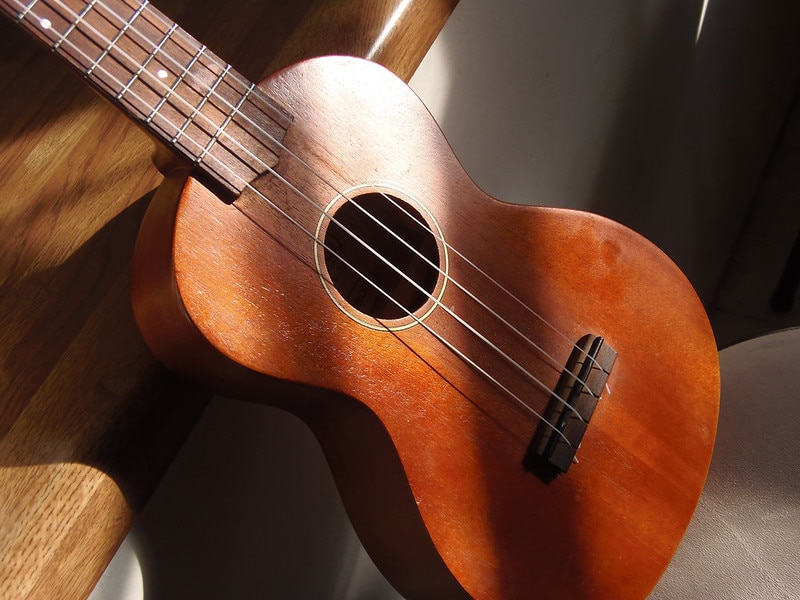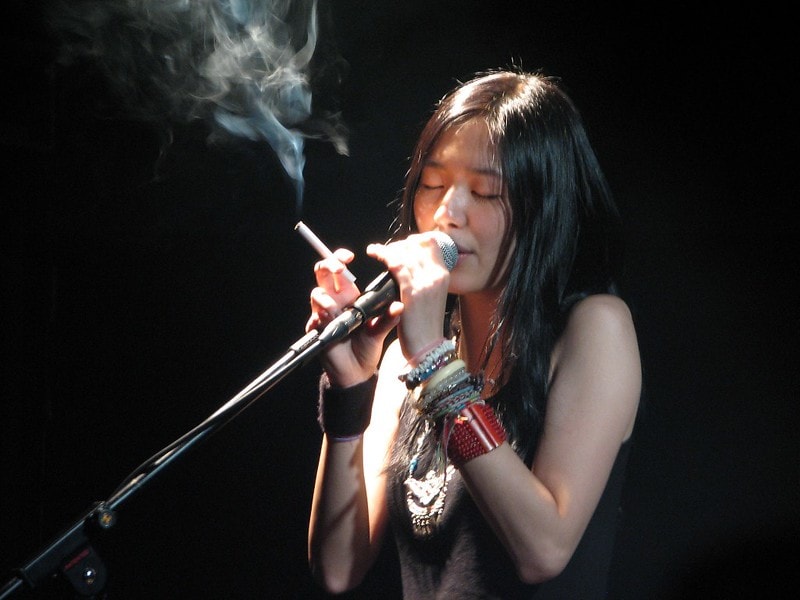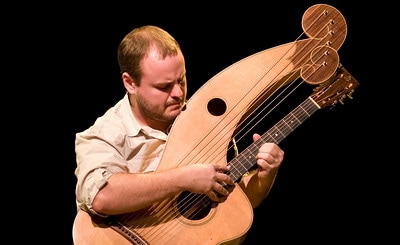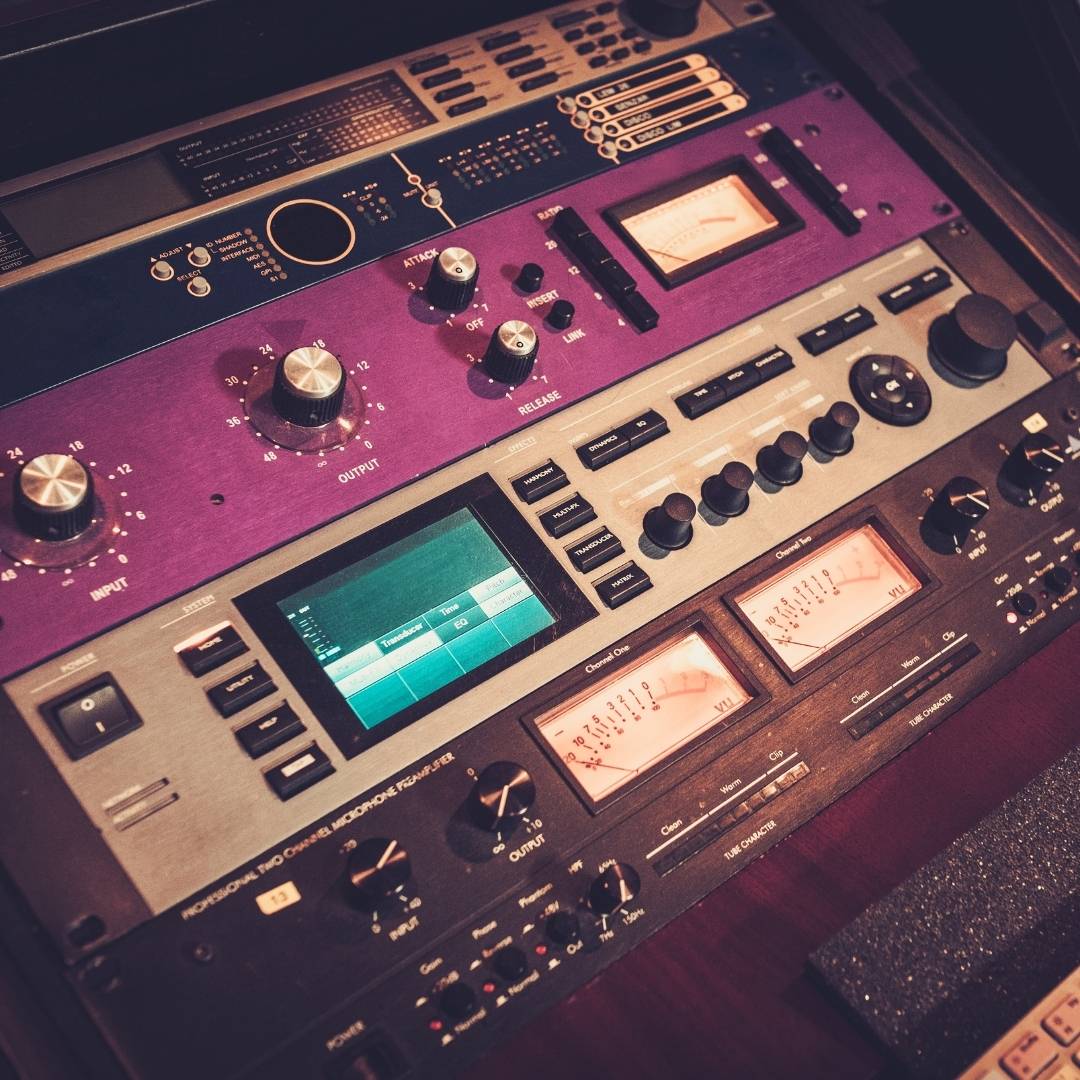
The Different Types Of Audio Effects
February 26, 2022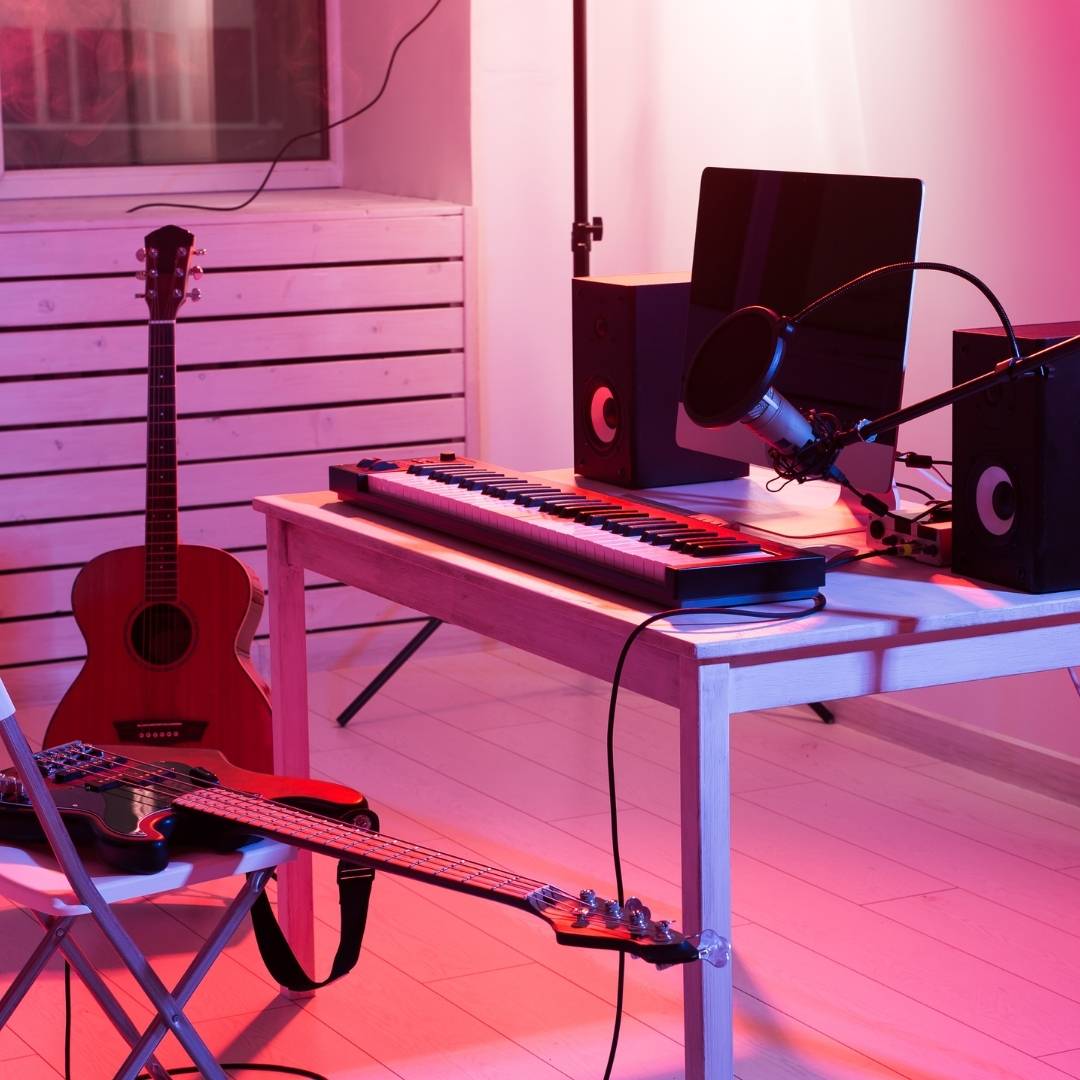
The Home Recording Studio Essentials You Need to Get Started
March 4, 2022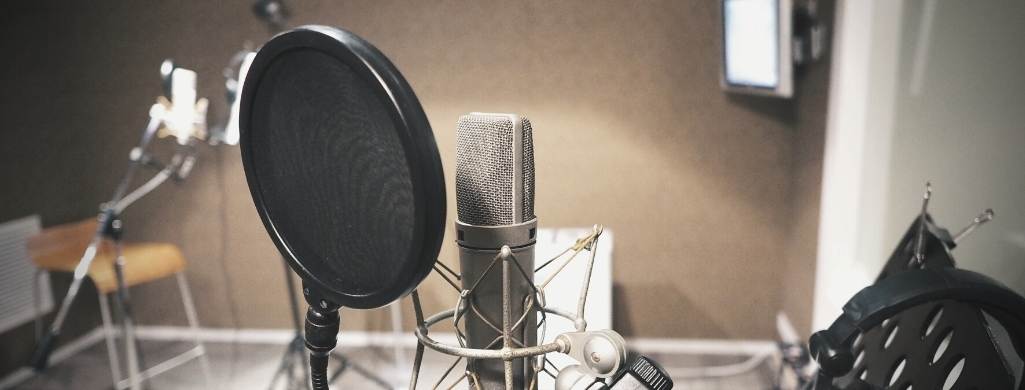
Have you ever said something into the microphone and regretted it? Have you ever realized that there were all these pop sounds, like ‘puh’ or ‘buh’, coming out of your mouth? You are not alone.
These pops can be really distracting for whoever is listening to you speak, especially if they have a sensitive hearing. It might even make them think that what you are saying isn’t very good. Fortunately, pop filters can help with this issue.
So What Is A Pop Filter and What Does a Pop Filter Do?
A pop filter is a device that attaches to the end of a microphone to reduce “popping” and “spitting.” It’s important for singers, speakers, podcasters, or anyone who uses a mic.
Pop filters can be attached to a microphone stand or clipped to the mic itself, and they come in different sizes depending on the type of mic you have. Pop filters are also helpful for reducing background noise, and they come in handy for recording instruments like the piano or guitar. There are two main types of pop filters:
Pop Shield
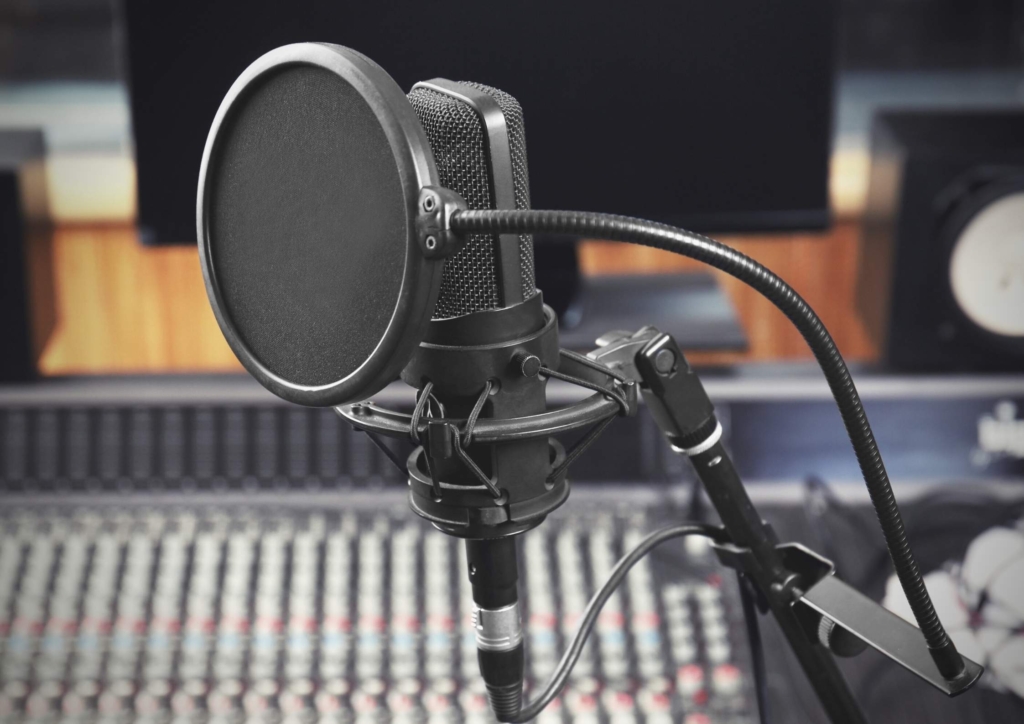
A pop shield is a funnel shape that allows some air to pass through. As it attaches to the mic stand, the pop shield is positioned just in front of the mic. The pop shield protects from pop and spit, but it does not filter them out. This type of pop filter is the most common.
Pop Screen

A pop screen, also known as a pop guard or windscreen, or a mic cond…. anyway it is more effective than a pop shield! 🙂 The terms are interchangeable. Windscreens come in a variety of shapes and sizes, and they can be attached to a microphone stand or clipped to the mic itself. It is usually cone-shaped, with the narrow end facing the mouth.
Windscreens are typically used in outdoor settings to reduce the amount of wind noise that is heard in the audio recording. They are also effective at reducing plosives, or popping sounds, which can be a problem when recording vocals.
How to use a pop filter?
If you’re using a pop filter for the first time, it might take a little getting used to. The key is to position the pop filter as close to the mouth as possible without actually touching your lips.
This will help to reduce the amount of popping and spitting that occurs. You may also need to adjust the placement of the pop filter depending on your vocal range and the type of microphone you’re using.
There are a few different ways to use a pop filter:
- If you’re using a pop filter on a microphone stand, hold the pop filter against the mic with one hand and use the other hand to adjust the height and angle.
- If you’re using a pop filter that’s attached to the mic, you’ll be able to hold it in place with one hand while you’re recording.
- Clip the pop filter on the microphone itself so it’s out of your way.
- Consider purchasing pop filter adjusters so you can adjust the pop filter without having to hold it in place.
When to Use A Pop Filter?

There are many times when you might want to use a pop filter. Some situations where it can be helpful include:
- When using a microphone for podcasting: Pop filters can help reduce plosives (the harsh consonants like “b” and “p”) that can make your voice sound muffled or distorted.
- When recording online video: Plosives can create noticeable distortion in your video footage, so using a pop filter can help keep your audio sounding clear and crisp.
- When recording in a studio: While pop filters aren’t necessary in all studio environments, pop filters can be helpful when recording vocals and voiceover. A pop filter can help minimize the occurrence of popping sounds, which can ruin an otherwise perfect take.
Why Pop Filters Are Important for Singers, Speakers, Podcasters, or Anyone Who Uses a Mic
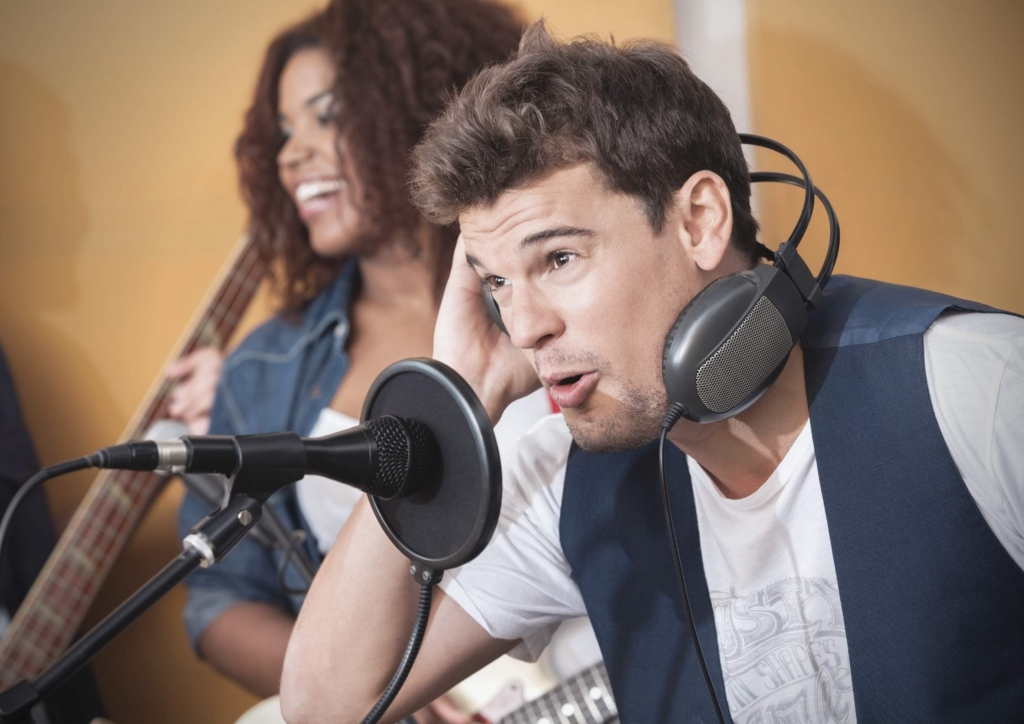
Without a pop filter, these pop sounds can be very loud and distracting. They can also damage your microphone. Pop filters help to soften these sounds, making them less noticeable and less likely to damage your microphone.
There are a few different types of pop filters available. Some are made from cloth while others are made from metal or plastic. The type of pop filter you choose will depend on your personal preferences and the type of microphone you are using.
The pop filter is usually mounted to the microphone stand so you’ll want one that will work with your specific setup.
What Kind of Pop Filter Should You Look For

When looking for a pop filter, you should consider the size of the pop filter, the material it is made out of, and the type of mount it has. The size of the pop filter is important because you want it to be large enough to cover the entire microphone head.
The material it is made out of is important because you want it to be durable and easy to clean. The type of mount it has is important because you want it to mount to the microphone stand securely, but not block your view of the pop filter.
If you are looking for a pop filter that attaches to the microphone stand, one pop filter option is the Auphonix pop filter that mounts directly to your microphone stand.
Another pop filter option is the pop filter with an adjustable gooseneck mount. This pop filter has a gooseneck mount that attaches firmly to the microphone stand. The pop filter head itself is attached to the pop filter via a flexible gooseneck. This pop filter has a 10″ gooseneck that is very flexible and easy to position in front of the microphone.
You could also consider getting pop filter with a clamp mount. It mounts to your microphone stand with a standard microphone clip. The pop filter head itself can swivel in any direction you need it to face. This pop filter has an 8″ gooseneck so you will need to position it directly in front of the pop filter.
What’s Next?
We hope this article has helped clarify what pop filters do and how best to use them in order to reduce popping and spitting when singing into a microphone.
Thank you for reading this pop filter article! If you’d like to check out what are some great pop filters options you could find on the market right now, check this out.


